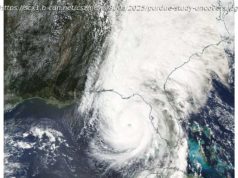An archaeologist from the University of New Hampshire and her team have collected data which indicates the presence of a large-scale pre-Columbian fish-trapping facility. Discovered in the Crooked Tree Wildlife Sanctuary (CTWS), the largest inland wetland in Belize, the team dated the construction of these fisheries to the Late Archaic period (cal. 2000-1900 BCE), pre-dating Amazonian examples by a thousand years or more.
An archaeologist from the University of New Hampshire and her team have collected data which indicates the presence of a large-scale pre-Columbian fish-trapping facility. Discovered in the Crooked Tree Wildlife Sanctuary (CTWS), the largest inland wetland in Belize, the team dated the construction of these fisheries to the Late Archaic period (cal. 2000-1900 BCE), pre-dating Amazonian examples by a thousand years or more.
“The network of canals was designed to channel annual flood waters into source ponds for fish trapping and would have yielded enough fish to feed as many as 15,000 people year-round, conservatively”, said Eleanor Harrison-Buck, professor of anthropology and director of the Belize River East Archaeology (BREA) project. “The dates indicate that the fisheries were initially constructed by Late Archaic hunter-gatherer-fishers and continued to be used by their Formative Maya descendants (approximately 2000 BCE to 200 CE). For Mesoamerica in general, we tend to regard agricultural production as the engine of civilization, but this study tells us that it wasn’t just agriculture—it was also potential mass harvesting of aquatic species.
Home
United States
USA — IT Earliest fish-trapping facility in Central America discovered in Maya lowlands






